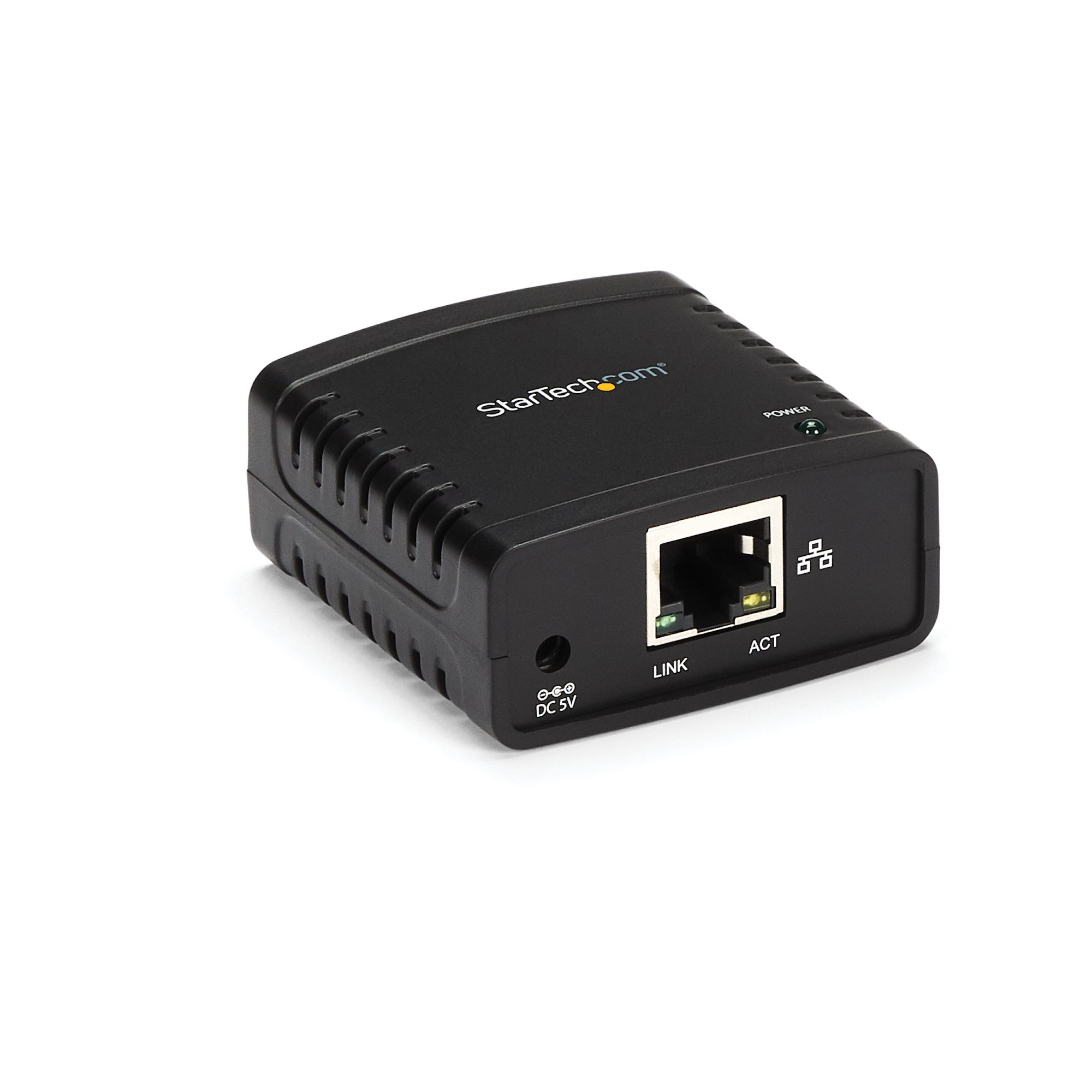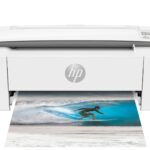Ever wondered how your office manages to send print jobs from multiple computers to different printers? A print server is the answer to this office printing puzzle. A print server is a device or software that connects computers and printers on a network, managing all print jobs by receiving, processing, and sending them to the right printer. This system creates an organized way to handle printing in environments where many people need to use printers.
Print servers work on a client-server model, acting as the middleman between users and printing devices. When you press print on your computer, the print server receives your request and puts it in a queue. This queue system ensures all print jobs are processed in order. Print servers can be standalone hardware devices or software running on a computer.
For businesses with many printers, a print server makes life much easier. Instead of connecting each computer directly to each printer, the print server creates a central hub. This setup allows for better print management across large device fleets and multiple office locations. It also adds helpful features like user tracking, security controls, and print job monitoring.
Why Use a Print Server?
Implementing a print server might seem like an extra layer of complexity, but the advantages it offers can significantly streamline your printing environment, regardless of whether you’re a small business or a large enterprise. Let’s delve into the key benefits:
- Centralized Management: This is arguably the most significant advantage. A print server acts as a single point of control for all your printing resources. Administrators can easily manage printer queues, update drivers, configure access permissions, and monitor print jobs from one central console. This eliminates the need to configure each individual workstation, saving considerable time and effort.
- Improved Efficiency: By managing print jobs centrally, a print server can optimize the flow of documents to printers. It can spool print jobs, prioritize urgent requests, and even implement print quotas to manage resource usage effectively. This leads to less waiting time for users and better utilization of your printing hardware.
- Enhanced Security: A print server provides a crucial layer of security for your printing infrastructure. You can control who has access to specific printers, track print activity, and even implement secure printing features like requiring authentication before a document is released. This helps protect sensitive information and reduces the risk of unauthorized access.
- Cost Reduction: While there’s an initial investment in setting up a print server, it can lead to long-term cost savings. Centralized management reduces IT overhead associated with printer maintenance and troubleshooting. Furthermore, features like print quotas and usage monitoring can help curb excessive printing and reduce paper and toner consumption.
- Simplified Driver Management: Installing and updating printer drivers on numerous individual computers can be a tedious and time-consuming task. With a print server, you only need to install and update drivers on the server itself. Client workstations automatically access the necessary drivers from the server, simplifying the process and ensuring driver consistency across your network.
Types of Print Servers: Hardware vs. Software
When considering a print server, you have two primary options: dedicated hardware print servers and software-based print servers. Each has its own set of characteristics and suitability depending on your needs.
Hardware Print Servers:
These are physical devices specifically designed to manage print jobs. They typically connect directly to your network and printers via Ethernet or USB.
| Feature | Description | Advantages | Disadvantages |
| Form Factor | Standalone physical device | Simple to set up, often very reliable | Limited scalability, may require physical space and power |
| Management | Usually managed through a web interface or a basic configuration utility | Generally user-friendly for basic print management | Advanced features might be limited compared to software solutions |
| Cost | Can range from relatively inexpensive to more costly depending on features | Lower initial investment for basic needs | Might require hardware upgrades for increased capacity or features |
| Scalability | Typically limited by the device’s specifications | Suitable for smaller networks with predictable printing needs | May not be ideal for rapidly growing organizations |
Software Print Servers:
These are applications installed on a computer (often a dedicated server) within your network that handle print management functions.
| Feature | Description | Advantages | Disadvantages |
| Form Factor | Software installed on an existing server or dedicated computer | Highly flexible and scalable, leverages existing hardware infrastructure | Requires an operating system and potentially more complex configuration |
| Management | Managed through the operating system’s print management tools or dedicated software | Often offers more advanced features and granular control | Can be more complex to set up and manage initially |
| Cost | Primarily the cost of the server hardware and the operating system license | Can be more cost-effective for larger deployments, leverages existing infrastructure | Requires resources (CPU, RAM, disk space) on the host server |
| Scalability | Highly scalable depending on the underlying server hardware and software capabilities | Can easily adapt to growing printing demands | Performance can be affected by other applications running on the same server |
Key Features to Consider in a Print Server
Whether you opt for a hardware or software solution, several key features can significantly impact the functionality and usability of your print server:
- Printer Compatibility: Ensure the print server supports the makes and models of printers you currently use or plan to use in the future.
- Network Connectivity: Verify that the print server offers the necessary network interfaces (e.g., Ethernet, Wi-Fi) to integrate seamlessly with your existing network infrastructure.
- Security Features: Look for features like user authentication, access control lists (ACLs), and secure printing options to protect sensitive documents.
- Driver Management: The print server should simplify driver deployment and updates for client workstations.
- Reporting and Monitoring: Features that allow you to track printer usage, monitor print queues, and generate reports can be invaluable for managing your printing resources effectively.
- Queue Management: Robust queue management capabilities, including the ability to pause, resume, cancel, and reorder print jobs, enhance user experience and administrative control.
- Mobile Printing Support: In today’s mobile-first world, the ability to print from smartphones and tablets can be a significant advantage.
By carefully considering these factors and evaluating your specific printing needs, you can choose the print server solution that best optimizes your printing environment.
Key Takeaways
- Print servers connect multiple computers to printers on a network and manage the printing queue.
- They can be hardware devices or software applications that handle print requests from many users.
- Print servers offer extra features like security controls, job tracking and simplified printer management.
Fundamentals of Print Servers
Print servers form the backbone of network printing operations. They help computers share printers efficiently while managing print jobs across an organization.
Defining Print Servers
A print server is a special network device or software that handles print requests from multiple computers. It works as a middleman between computers and printers. When you click “print” on your computer, the print server receives this request.
Print servers store these requests in a queue. They then send them to the printer one by one. This system prevents printing conflicts when many people try to print at once.
Most print servers also offer helpful features. These include:
- Monitoring ink levels
- Tracking who prints what
- Setting print permissions
- Managing printer drivers
Print servers can be hardware devices, software programs, or features built into operating systems.
Role in Computer Networking
In computer networking, print servers create a central point for printer management. Without them, each computer would need direct connections to every printer.
Print servers simplify printer setup across networks. IT staff can add or update printer drivers once on the server instead of on every computer. This saves time and reduces errors.
They also improve network security. Administrators can control who prints what based on user accounts or departments. This helps track printing costs and prevent unauthorized use.
Print servers balance the printing load across multiple printers. If one printer is busy, the server can redirect jobs to available printers. This creates faster printing times for everyone.
Common Types of Print Servers
Several types of print servers exist to match different network needs:
Hardware Print Servers
- Standalone devices connected directly to the network
- Often include multiple ports for connecting several printers
- Work independently of any computer
Software Print Servers
- Programs running on networked computers
- Windows print server functions built into Windows Server
- Linux print server options like CUPS (Common Unix Printing System)
Wireless Print Servers
- Connect printers to networks without cables
- Ideal for offices with limited wiring options
- Allow flexible printer placement throughout buildings
Cloud-Based Print Servers
- Run printing services over the internet
- Enable printing from anywhere to office printers
- Reduce need for on-site hardware maintenance
Setting Up a Print Server
Setting up a print server requires the right hardware, proper network configuration, and appropriate software installation. This process makes it easy for many users to share printers across a network.
Hardware Requirements
To set up a print server, you need these basic items:
- Dedicated computer or server – Windows or Linux system with enough RAM (4GB minimum)
- Network interface card – For connecting to your network
- Sufficient storage space – At least 20GB for print drivers and job queues
- Reliable power supply – To prevent print job interruptions
You can also use dedicated print server devices that connect directly to your network. These small boxes connect to printers using USB or parallel ports.
Many modern printers come with built-in print servers. These printers connect directly to your network through Ethernet cables or Wi-Fi. This option eliminates the need for extra hardware.
Network Configuration
The network setup is key for a working print server:
- Assign a static IP address to your print server to ensure it’s always found at the same address
- Enable TCP/IP printing in your network settings
- Open firewall ports needed for print services (typically port 631 for IPP or 9100 for raw printing)
Make sure your print server has good network speed. A wired Ethernet connection works best for print servers. Wi-Fi can work but may be slower for large print jobs.
Check that all computers on the network can reach the print server. Do a simple ping test to verify connectivity before setting up printer sharing.
Software Installation
Installing the right software is the final step in setting up your print server:
For Windows servers:
- Open Server Manager
- Select Add Roles and Features
- Install “Print and Document Services” role
- Add printers through the Print Management console
For Linux servers:
- Install CUPS (Common Unix Printing System)
- Access the admin page through a web browser at http://localhost:631
- Add printers through the web interface
After setup, load all needed printer drivers to the server. These drivers let different computers use the printers without installing their own drivers.
Test the connection by printing from client computers. Your print server should now handle print jobs from any computer on your network.
Print Job Management
Print job management helps control how documents get printed in a network. It handles everything from when jobs enter the queue to when they finish printing.
Understanding Print Queues
A print queue is where print jobs wait before they go to the printer. When you click “Print” on your computer, the job doesn’t go straight to the printer. It first goes to the print server.
The server puts the job in line with other waiting jobs. You can see all waiting jobs in the queue. This lets you check if your job was received.
Print queues show helpful details about each job:
- Document name
- Who sent it
- Number of pages
- When it was sent
- Current status
You can cancel your own jobs from the queue if you made a mistake. This stops wasted paper and ink.
Prioritizing and Scheduling Jobs
Print servers can manage job priority based on rules set by network managers. Some jobs might need to be printed right away while others can wait.
Priority settings might depend on:
- Who sent the job
- Which department they work in
- How big the job is
- What time of day it is
Large print jobs can be scheduled for off-hours. This keeps the printer free during busy work times.
Some print server software lets managers set print windows. These are specific times when certain types of jobs can print. For example, big reports might only print after 5:00 PM.
Smart scheduling helps share printer resources fairly. It makes sure urgent jobs get done first while keeping things moving for everyone.
Printer and Print Server Security
Protecting your print environment requires strong user controls and data protection measures. A secure print server helps stop data breaches and prevents unauthorized access to sensitive documents.
Access Control and User Authentication
Print servers need strict rules about who can print what. User authentication is the first defense against print-related security threats.
User accounts should have specific permissions. Some staff may only need to print basic documents. Others might need access to color printing or special paper trays.
Print servers can require users to enter a PIN code at the printer. This stops private documents from sitting in output trays where anyone can see them.
Many modern print systems use ID cards or badges. Users tap their card on the printer to release their jobs. This creates an audit trail of who printed what and when.
Group policies help manage printer access across many computers. IT staff can set these up once and apply them to everyone.
Encryption and Firewall Considerations
Print data needs protection when moving through your network. Without encryption, hackers might steal document content.
Print servers should use secure protocols like HTTPS or IPsec. These scramble the data as it travels between computers and printers.
A good firewall setup blocks attacks while letting print traffic through. Only open the exact network ports your print system needs.
Print servers should sit behind firewalls with the rest of your internal systems. This creates an extra layer of protection from outside threats.
Update your print server software often. Old software may have security holes that hackers can use to break in.
Printer firmware also needs regular updates. Many security problems happen because printers run outdated software that has known flaws.
Network Printing Capabilities
Print servers offer key networking features that help manage how computers send documents to printers. These systems handle print requests efficiently across various network setups.
Direct IP vs. Shared Network Printing
Direct IP printing connects computers straight to printers using their network addresses. This method works without a dedicated print server. The printer gets jobs directly from the computer.
Shared network printing uses a print server as the middle step. All print jobs go to the server first. Then the server sends them to the right printer. This creates several benefits:
- Centralized management of multiple printers
- Better control of print queues
- Easier printer driver updates
- Print job storage when printers are busy
Shared printing works better for offices with many users. Direct IP printing might be simpler for small setups with few printers.
Integration with Network Protocols
Print servers support many network protocols that help computers talk to printers. The most common ones include:
- TCP/IP: The basic internet protocol that most network printing uses
- Internet Printing Protocol (IPP): Lets users print through the internet
- Line Printer Daemon (LPD): An older but still used printing system
- Server Message Block (SMB): Used mainly with Windows networks
These protocols help print servers work with different computer types. A good print server can handle Windows, Mac, and Linux print requests at the same time.
Print servers also track printer status. They can tell users when printers need paper or have other problems. This makes fixing printer issues faster.
Advanced Features of Modern Print Servers
Print servers today offer powerful tools that go beyond basic printing. These systems help manage print jobs, track costs, and boost office productivity.
Print Management Software
Modern print servers use special software to control printing activities. This software lets IT teams set up and manage printers from one place. They can add new printers, update drivers, and fix problems without walking around the office.
Printer discovery is a key feature that finds all printers on the network. The system identifies each printer’s location, model, and status.
Print servers can handle many printing protocols like PCL, PostScript, and IPP. This means they work with different printer brands and models.
The software also shows real-time status of all print jobs. Users can see if their document is printing, waiting, or has an error.
Key benefits:
- Central control of all printers
- Easy driver updates
- Printer status monitoring
- Print job tracking
Accounting and Quota Management
Print servers track who prints what and how much. This helps businesses control costs and reduce waste.
Print quotas limit how many pages each person or department can print. When someone reaches their limit, the server can block more print jobs or send alerts.
Detailed reports show printing patterns across the organization. Managers can see which departments print most and plan budgets better.
Color printing costs more than black and white. Print servers can set rules about who can print in color and when.
Many systems add watermarks to printed pages. This helps track where documents come from and prevents misuse.
Cost control features:
- User-based print limits
- Department billing
- Color vs. black and white tracking
- Usage reports
- Document watermarking
Enhancing Productivity with Additional Features
Modern print servers include tools that save time and make printing easier. Centralized management means IT staff can focus on other tasks.
Print servers can route jobs to the best printer. If one printer is busy or broken, jobs go to another one automatically.
Mobile printing lets people send documents from phones and tablets. They don’t need to be at their desk to print important files.
Secure printing holds documents until the user enters a code at the printer. This keeps private information safe.
Print preview and editing tools help catch mistakes before printing. This saves paper and reduces reprints.
Productivity boosters:
- Load balancing between printers
- Mobile device support
- Secure release of documents
- Print preview options
- Paper-saving features like duplex printing
Administering and Maintaining Print Servers
Managing print servers requires regular upkeep and monitoring to keep printing operations running smoothly. Good administration practices help prevent downtime and ensure users can print when they need to.
Routine Maintenance Tasks
Print servers need regular care to work well. System updates are a key part of print server maintenance. These updates fix bugs and add new features to the print server software.
Printer driver updates are also important. Old drivers can cause printing problems. Set a monthly schedule to check for new drivers for all printer models on your network.
Queue management should be done weekly. Print job queuing helps printing run smoothly, but stuck jobs can clog the system. Clear out old print jobs and check for errors.
Backup your print server settings often. This saves printer definitions, user permissions and queue settings. If the server fails, you can restore these backups quickly.
Keep a log of all maintenance tasks done. This helps track when updates were installed and when problems were fixed.
Monitoring and Troubleshooting
Print servers need constant watching to catch problems early. Use monitoring tools that show printer status and alert you when issues happen.
Set up alerts for common problems:
- Low toner or paper
- Printer offline warnings
- Long print queues
- Server resource usage (CPU, memory)
- Disk space for print jobs
When problems happen, check these areas first:
- Network connections between server and printers
- Printer physical status (paper, toner, jams)
- Print spooler service on the server
- User permissions
The print server makes administration easier by letting you fix many problems from one place. You don’t need to visit each printer.
Create a troubleshooting guide for common issues. This helps IT staff fix problems faster and keeps printing running smoothly.
Scaling and Upgrading Options
Print servers must grow as company needs change. When planning for growth, think about both hardware and software needs.
For bigger companies, consider adding more print servers. This spreads the workload and prevents one server failure from stopping all printing.
Print servers offer flexibility and can be scaled up or down based on printing needs. When adding new printers to your network, check if your server can handle the extra load.
Cloud-based print servers are worth thinking about. They need less hardware and can be accessed from anywhere. This works well for offices with remote workers.
Upgrade options to consider:
- More RAM for busy print servers
- Faster network connections
- Print management software with better features
- Load balancing between multiple servers
Test all upgrades on a separate system before making changes to your main print server. This prevents surprise problems that could stop printing for everyone.
Print Server Alternatives
Organizations now have several options beyond traditional print servers to manage their printing needs. These alternatives offer different benefits such as cost savings, easier management, and improved reliability.
Dedicated Print Server vs. Software Solutions
A dedicated print server requires physical hardware to manage print jobs. This traditional approach works well for large offices with many printers. However, it can be expensive to maintain.
Software print server solutions offer a more flexible option. Programs like PrinterLogic let you manage printers from a web dashboard while installing printers locally on each computer. This approach spreads out the printing workload to individual computers.
Virtual print servers run on existing virtual machines. This cuts hardware costs and makes backup easier. No new physical equipment is needed.
Some printer manufacturers offer built-in print server options. HP JetDirect is a common example that connects printers directly to the network. These built-in solutions work well for small offices with fewer printers.
Evaluating Cloud-Based Printing Solutions
Cloud printing has become a popular choice for modern workplaces. It removes the need for on-site print servers completely.
Azure Universal Print is Microsoft’s cloud printing service. It works with Microsoft 365 but may have slower print speeds than local solutions. Some users report it can take 2-5 minutes to start printing jobs.
Other options like UniFlow offer useful features such as a universal printer driver for all clients. UniFlow also includes print tracking to assign costs to specific projects instead of the IT budget.
CUPS (Common Unix Printing System) is a free option for Linux environments. It provides a simple way to manage printers across multiple computers without a Windows print server.
When choosing a cloud solution, companies should consider internet reliability. Print servers should stay on-site if sending print jobs to the cloud and back doesn’t make sense for your workflow.
Frequently Asked Questions
Print servers manage network printing with specific features and connection methods. Users often need help finding server addresses, understanding types, and setting up printers properly.
How do I find the address of a print server?
You can find a print server address in several ways. The most common method is to check your network settings.
Look at your printer documentation for default addresses. Many print servers use standard IP ranges like 192.168.1.x.
You can also use network scanning tools to discover print servers on your network. These tools show all connected devices.
Can you provide an example of a print server in use?
A typical office uses a print server to manage multiple printers. Employees send documents to the server instead of connecting directly to printers.
The print server queues these jobs and sends them to available printers. This helps when many people need to print at once.
A school might use a print server to track student printing limits. It counts pages and manages access to different printers.
What different types of print servers are available?
Hardware print servers are physical devices that connect to your network. They work independently from computers and often handle multiple printers.
Software print servers run on a computer and manage printing tasks. Windows, Mac, and Linux all include print server software.
Embedded print servers come built into many newer printers. No extra hardware is needed with these models.
How does a cloud print server function?
A cloud print server works through the internet instead of a local network. Users send print jobs to an online service.
The cloud server receives these jobs and forwards them to the correct printer. This works even when you’re not in the same building as the printer.
Security features protect your documents while they travel over the internet. Many services use encryption to keep files safe.
What are the essential features of a print server?
Print job queuing lets multiple users send documents without waiting. The server stores jobs until printers are ready.
Printer management tools help track ink levels and errors. Administrators can see problems before users report them.
Access controls limit who can use which printers. This helps manage printing costs and prevent misuse.
How does one connect a printer to a print server?
First, connect your printer to the network using either a cable or Wi-Fi. Make sure it has power and can communicate.
Next, access the print server‘s control panel. This might be a web interface or computer program.
Add the new printer by entering its IP address or selecting it from a list of found devices. The printer discovery process should find compatible models.
Set any needed options like paper size or default settings. Then share the printer with network users who need access.







